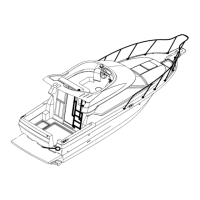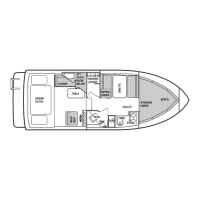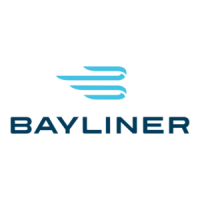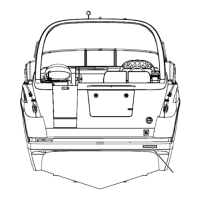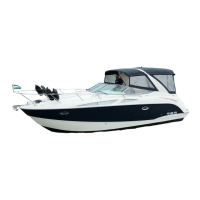Do you have a question about the Bayliner 2858 Classic Cruiser and is the answer not in the manual?
Provides boat dimensions (length, beam, draft) and tank capacities (fuel, freshwater, waste).
Advice on gaining experience, safety classes, and contacts for training.
Details crucial safety standards, including hazards like falling, propeller, and carbon monoxide.
Introduces the dangers of carbon monoxide, its sources, and effects.
Offers practical advice on preventing CO poisoning, including alarms and checks.
Provides critical safety warnings and instructions for lifting the boat.
Details the layout of instruments, gauges, and accessory switches at the helm.
General warnings and precautions for electrical systems, including fire and shock hazards.
Explains the function and positions of the battery switch located in the locker.
Covers safety warnings and precautions for connecting to shore power.
Provides critical warnings about fuel system inspection and fueling procedures.
Describes the bilge blower system for fume removal and ventilation procedures.
Describes the automatic bilge pumps, their control, and operation.
Details the pressure-type freshwater system, pump operation, and tank management.
Covers safety warnings, operation, and winterization of the water heater.
Details the marine head and holding tank system, including operation and local regulations.
Diagram showing the routing of wire harnesses within the boat's hull.
Diagram illustrating the routing of wire harnesses on the boat's deck.
Diagrams showing the routing of positive and negative battery cables.
Wiring diagram for the AC electrical system when connected to a single dockside source.
Wiring diagram for the AC electrical system with dual dockside power connections.
Detailed wiring diagram for the gas engine electrical system.
Detailed wiring diagram for the diesel engine electrical system.
Fields to record information about the selling dealer.
Fields for recording engine manufacturer, model, and serial numbers.
Fields for recording propeller manufacturer, model, and pitch.
Fields for recording ignition and other key numbers.
Fields for recording manufacturer, model, and serial numbers for electronics.
Fields to record details about the boat's registration, length, fuel capacity, etc.
Fields to record names, ages, health, and phone numbers of persons on board.
Fields to record operator's name, experience, address, and contact information.
Checklist for essential survival equipment like marine radio, PFDs, flares, and food.
Fields to detail trip plans, departure/arrival times, and stopover locations.
| Beam | 9' 6" |
|---|---|
| Water Capacity | 30 gal (114 L) |
| Holding Tank Capacity | 20 gal (76 L) |
| Sleeping Capacity | 6 |
| Engine | Single inboard |
